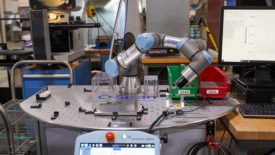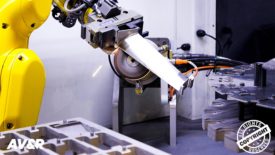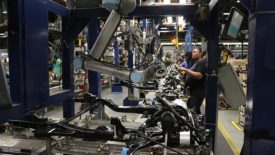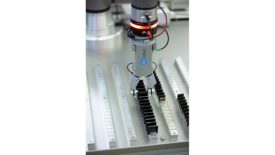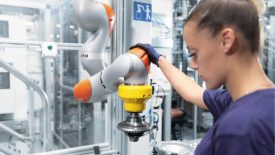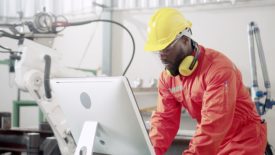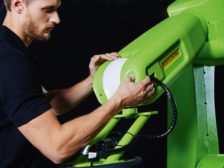Home » collaborative robots
Articles Tagged with ''collaborative robots''
Quality 101
As robotics use grows throughout processing, packaging, and logistics environments, it’s important to understand your options — and how to keep up with safety guidelines.
Read More
Robotics
New Scale Robotics Automates Gauging Applications With FANUC Cobots
Company named a FANUC authorized systems integrator.
August 27, 2024
Vision & Sensors | Cobots
Collaborative Robots Emerge as Viable Automation Options for SMEs
Benefits and key steps for a successful system design and installation
August 14, 2024
Quality in Automation | Automation
Leveraging automation for quality gains
As automation simplifies and enhances manufacturing processes, quality control staff see significant career advantages, making a shift towards more efficient, consistent, and data-driven production environments.
March 29, 2024
Automation
Skilled Workers Pivot in an Automated Age — Part 1
Transitioning from repetitive tasks to specialized roles, with training as the key.
January 16, 2024
Vision & Sensors | Collaborative Robots
Four Trends to Watch in Cobot-Based Quality Automation
Explore some of the benefits and capabilities of cobot-based quality inspection and metrology systems.
July 19, 2023
Vision & Sensors | Collaborative Robots
Collaborative Automation Delivers Quality Boost
Ease of use is one of the main attractions of collaborative automation.
December 8, 2022
Management
6 Key Considerations For Applying Collaborative Robots
The extent of collaboration helps determine the need for a cobot.
June 8, 2022
Test & Inspection
How Collaborative Is Your Manufacturing Application?
The design and operation of the manufacturing application will determine how and how often the human and robot will collaborate.
February 15, 2022
Vision & Sensors | Cobots
Cobots for the Win
Collaborative robots helped manufacturers keep production lines running during the pandemic. They're accessible to small- and medium- sized businesses. And their simplicity just may help to shrink the skills gap.
May 5, 2021
Stay in the know with Quality’s comprehensive coverage of
the manufacturing and metrology industries.
eNewsletter | Website | eMagazine
JOIN TODAY!Copyright ©2024. All Rights Reserved BNP Media.
Design, CMS, Hosting & Web Development :: ePublishing



